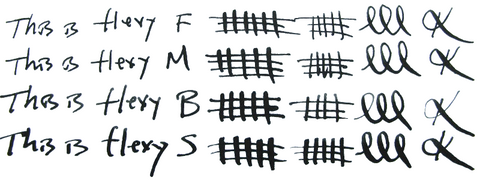Danitrio Phoenix Bird with Flowers Maki-E on Hakkaku Fountain Pen
Starting at $450/mo for 6 month no-interest installments, 10% down using 
Learn about our Payment Relief Plan. |
|---|
✓ 100% Genuine Urushi
✓ Contains the Maki-E Red Seal (Highest Quality of Maki-E Art)
✓ Hand-painted by highly-trained Japanese Artisans
The phoenix in Japan reflects a positive meaning (like most cultures). In Japan, it is thought that the phoenix is a symbol of the imperial household and also represents power and strength. The karakusa (Japanese for "arabesque") is commonly used to represent longevity and prosperity.

About Danitrio Hakkaku Fountain Pen Series:
The Hakkaku is a Danitrio series pen that is octagonal-shaped. Hakkaku means "discovery" in Japanese.
Nib Details:

This pen is furnished with an 18k Gold, two-toned #6 nib. What has been described by many Danitrio collectors as the fireball nib is an image of “Kaen-Kohai” which is a flame-shaped halo of “Fudo Myoo” (Acala, the God of Fire). This halo is commonly painted on the back of Japanese Buddhist statues.
An UrushiPen.com representative will contact you to confirm nib tip size preference (fine, medium, broad, or stub) following the placement of the order.

Technical Specification:
| Cap Length | 69 mm (2.71") |
| Cap Diameter | 19 mm (0.75") |
| Barrel Length | 110 mm (4.33") |
| Barrel Diameter | 16 mm (0.63") |
| Pen Length (Closed) | 147 mm (5.79") |
| Pen Length (Posted) | 170 mm (6.69") |
| Net Weight | 35.5 g (1.25 oz) |
| Net Weight (w/ink) | 37.2 g (1.31 oz) |
| Filling System | Cartridge/Converter |
About the Artisan:

This pen was hand-painted by Koichiro Okazaki (Kogaku). Born in 1959. He is a renown Maki-E artisan in Japan and considers himself wholeheartedly traditional when it comes to Maki-E. He is recognized by the Japanese Government as a Dento Kogei-shi, which an honorary title meaning "master of traditional crafts" and is given only to a select few artisans who have a significant contribution to their craft. Many of his Maki-E works have been accepted and rewarded at national art exhibitions. He had learned Maki-E from a master and became an independent artisan 5 years later. He was recognized with Kao (authorized monogram) by Kuda Munenori of Sado Omote school in 1991. He performs Maki-E on many traditional accessories, hair pins, combs, jewelry, and fine writing instruments.


